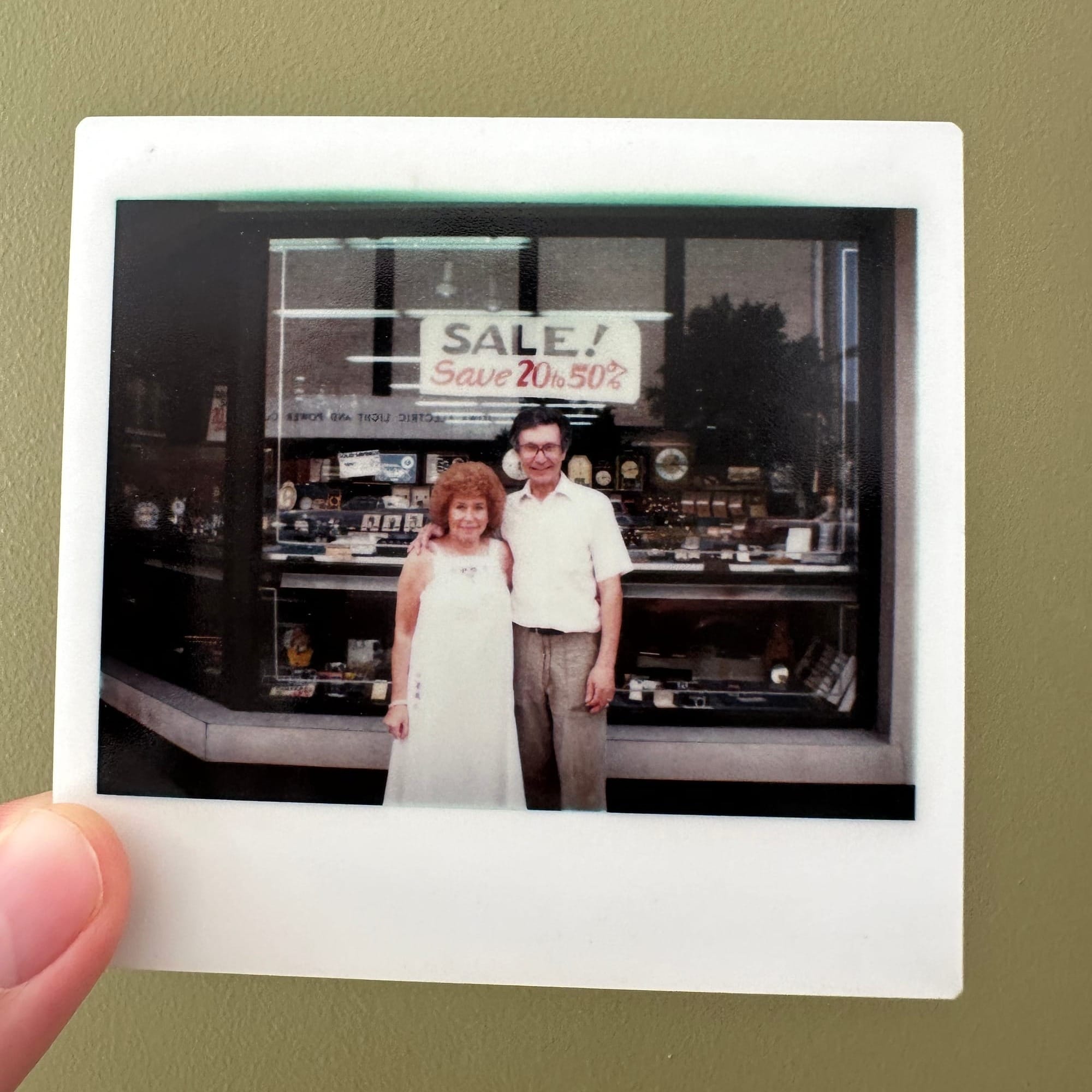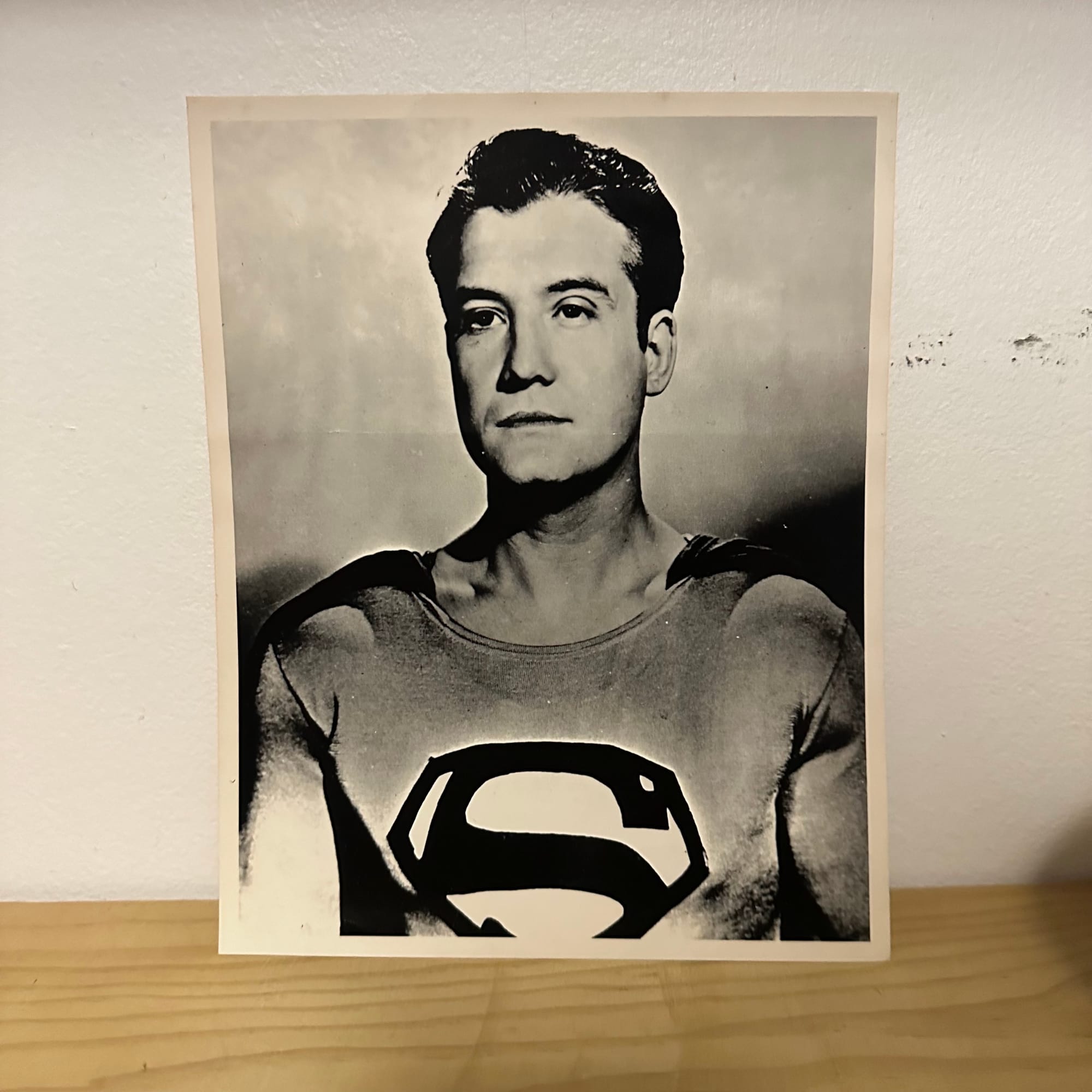On Portraits And Superman
Why portraits matter
It’s fair to say that, until now, my interest in portraiture peaked in high school, when swapping wallet-sized school photos was currency for cool points and crushes. Back then, the value of the photo wasn't how artistic or beautiful it was, it was about be included and that maybe your crush would want to trade with you too. In adult speak, it was about connection.
It only took my 20 years to understand that my lack of interest in portrait art had nothing to do with a painting or photography style and everything to do with my lack of connection.
The penny would drop after an unplanned visit to the Head On Photography Festival's Portrait Show at Bondi Beach's Pavilion Gallery. I don’t know if it was the open, salty air of the gallery or my relief from having a sleeping baby strapped to my chest but I started to feel—dare I say—inspired.
I felt connected to the photographers and subjects. I imagined myself in people’s homes as a fly on the wall, watching the photo shoot and learning about the subjects. How did the photographer capture such a perfect shot? How were the subjects posing so authentically? What was the conversation like when the photographer asked to take their picture? Was there conflict? Happiness? There were just so many questions!
I left the exhibition intrigued by the authenticity made possible by photography. And that was all I needed to start finding inspiration in portraits.
Weeks after my visit to the exhibition, I was digging through a tub of old knick-knacks in our dampish concrete cube of a storage room, and I unearthed a Polaroid of my grandparents (Pappa Oz and Bubbe) and a framed headshot of George Reeves (the original Superman).

The photo of my grandparents, taken in the '80s, captures them standing proudly in front of the family pawn shop: Siegel’s Jewellery and Loan in Cedar Rapids, Iowa. Staring at this discovery, I became teary. Even now, I get emotional looking at and thinking about this photo. It isn't just a photograph; it is actually them—the actual light that reflected from their faces to be perfectly preserved in film for forty years.
I see them, and I also see my childhood; running through the narrow isles between jewellery showcases, the dark splotches of chewing tobacco fossils baked into the thin carpet, vacuuming and whipping counter-tops with Windex (oh can I still smell that wonderful smell!), and lurking around the basement filled with video games, electronics, guns, and hacking the 5 cent Pepsi machine. What a time!
I now understand why Polaroids hold near-religious significance in so many artists' journeys—these tiny treasures are markers of history.

After tucking away Pappa and Bubbe's photo, I turned to the portrait of George Reeves in full Superman costume, circa 1950. Superman was my first childhood obsession, and George Reeves was the original television super star.
Look at this picture for 10 seconds. What do you see?
Most would look into George’s eyes and see a burnt-out Hollywood superstar. His eyes drooped from exhaustion. His mouth is unmanipulated by expression. Under the cape and reflective "S," he looks close to death. We want to see the man of steel, but we see a regular guy completely depleted.
When I look, my connection is different. I see a childhood hero. I remember my youthful years in Chicago blaring Sinatra until Tony the Doorman had to give us a warning. I also see a symbol of originality. For everyone who comes to my home office, I get to tell them, "This is the original Superman. Do you not know George Reeves?"
Oddly enough, I never really knew George Reeves' story, so here's his life and controversial death condensed to a few sentences:
Born in Woolstock, Iowa, on January 5, 1914, his parents soon separated and moved him to Galesburg, Illinois (my Mom is from Galesburg, Michigan), and later Pasadena, California.
After several years on the stage, in low-budget Westerns, and serving in the U.S. Air Force during WWII, he landed his role in 1951 in The Adventures of Superman television series, where he was slingshot into superstardom.
He mysteriously died in 1959 at 45 years old from a gunshot wound to the head. Many believe it was foul play due to his long-term relationship with Toni Mannix, the wife of MGM Executive Eddie Mannix. Yet, beyond the controversy, his legacy remains—shaping the character who embodied strength, kindness, and endurance. He was the mould that all his predecessors would adhere to: Christopher Reeve, Dean Cain, Brandon Routh, Henry Cavill, and every single child who wears a Superman outfit for playtime.
What I have realised from connecting with this images was how deeply the equation for being a superman is embedded in my character. How the traits of; having the strength (mental and physical) to do what you know to be right, to live kind-heartedly, and to possess an unwavering self-belief, are common in my most revered role models, including my grandfather Pappa Oz.
I have learned that portraits were never just about faces. They were about who those faces belonged to, what they stood for, and the connections they sparked. Whether it was a high school photo passed between friends, a Polaroid treasured for decades, or a framed Superman hanging on my wall, each one meant something. And that’s what makes portraiture matter.
